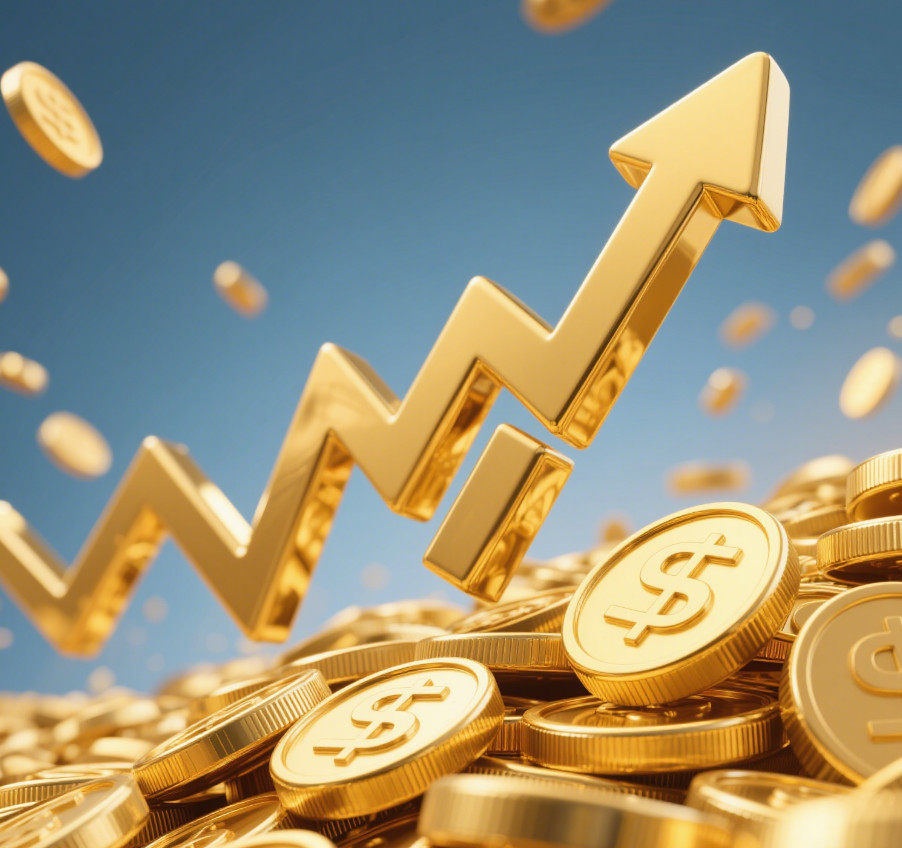
Recently, the spot price of gold broke through $3,350 per ounce, with an intraday increase of 0.65%, setting a new historical high. Behind this rally lies a comprehensive rise in market risk aversion, with the tariff policy implemented by the Trump administration serving as the direct trigger. This article analyzes the underlying logic of the soaring gold price from three dimensions: policy shock, market response, and institutional trends, and points out potential risks.
Since April 2025, the Trump administration has imposed "reciprocal tariffs" on many countries around the world, with the intensity and scope far exceeding market expectations. On April 2nd, the United States announced the establishment of a 10% "minimum benchmark tariff" on its trading partners and imposed higher tariffs on some countries. This policy directly impacted the global supply chain, leading many countries to take countermeasures and further intensifying trade frictions. Data shows that since April, the fluctuation range of the spot price of gold has significantly expanded. It began to rise on April 9th and broke through the $3,300 per ounce mark on April 16th.
The core contradiction of tariff policy lies in its violation of the basic principles of economics and the rules of the World Trade Organization. Pressuring trading partners in the name of "reciprocal tariffs" actually undermines the multilateral trading system and drives up global trade costs. This uncertainty has intensified investors' concerns about the global economic outlook, and funds have flowed to safe-haven assets, with gold becoming the top choice.
The direct driving force behind the soaring gold price comes from the overall increase in market risk aversion sentiment. The uncertainty of Trump's tariff policy, coupled with the lower-than-expected US March CPI data and the rising expectations of the Federal Reserve's interest rate cut, have jointly pushed the gold price back to its historical high. On April 17th, the spot gold price on the Shanghai Gold Exchange reached 795.36 yuan per gram, hitting a new high. Since the beginning of this year, the spot gold price denominated in RMB has risen by approximately 27% cumulatively, approaching the increase for the entire last year.
However, the frenzy in the gold market is not solely driven by the demand for safe-haven assets. Data shows that the top five institutions holding gold futures on the New York Mercantile Exchange (COMEX) account for 42.3%, and its daily trading volume can cover 3.2 times the global annual gold production. The virtual trading scale of this "paper gold" market makes price manipulation possible. For instance, during the "blashover" on April 11, 2025, when gold prices soared by $50 in a single day, the open interest of gold futures on the Chicago Mercantile Exchange (CME) increased by 120,000 contracts, corresponding to a virtual trading volume of 300 tons of gold, far exceeding the net purchase of 800 tons of gold by global central banks for the entire year.
The pricing power of the gold market has been woven into a huge web composed of financial institutions, geopolitical traders and algorithmic programs. In the fourth quarter of 2024, investment banks such as Goldman Sachs and jpmorgan Chase simultaneously released forecast reports stating that "gold will break through $3,500", but their over-the-counter option holdings indicated that these institutions actually held short positions worth $12 billion. After creating a market frenzy to drive up prices, they then precisely target with derivative tools, forming a closed loop of "bullish research reports and short options" for harvesting.
Furthermore, the leverage trap in the futures market further amplifies price fluctuations. On April 11, 2025, during the "lightning war" where gold soared by 50 US dollars in a single day, institutions, through the linkage of high-frequency trading and algorithms, created breakthrough signals at key price levels, triggering retail investors to follow suit and quickly close their positions in the opposite direction after the market closed, reaping over 2 billion US dollars in profits in a single day. This systemic risk of cross-market manipulation was fully exposed during the flash crash of gold prices in April 2025: leveraged funds sold gold to fill the margin gap of US stocks, causing the gold price to plunge by 5% in a single day.
The soaring price of gold has entered a new stage of "high volatility, high risk and high expectations". First of all, the gold price has risen by more than 70% since October 2023, and the accumulated risks cannot be ignored. Secondly, some investors purchase gold by taking out loans with leverage. For instance, an investor takes out a loan of 170,000 yuan to buy gold for one year and needs to repay over 500 yuan per month. This kind of behavior may not only lead to the loss of all the principal, but even result in debt.
Furthermore, the distortions in the gold market are intensifying. The price of pure gold jewelry in China has reached 990 yuan per gram, representing a 28% premium over the international gold price. Meanwhile, the proportion of processing fees has soared from 8% in 2020 to 23%. Brands such as Chow Tai Fook and Lao Feng Xiang have pushed the profit margin of the gold retail end to a historical peak of 42% through the dual increase of "brand premium + processing fee". More covertly, some gold stores collude with futures companies to delay price adjustments when international gold prices fall, taking advantage of the time difference to make profits.
The soaring price of gold is both a direct response of the market to the uncertainty of Trump's tariff policy and a concentrated manifestation of institutional speculative behavior. However, behind this kind of revelry lies huge risks. For investors, it is necessary to be vigilant about the potential losses brought by high volatility and high leverage, and avoid using gold as a short-term speculation tool. For regulatory authorities, it is necessary to strengthen the supervision of the gold market and prevent cross-market manipulation and systemic risks.
Against the backdrop of multiple challenges in the global economy, the safe-haven attribute of gold is undoubtedly important, but over-reliance on gold is not a long-term solution. Only by strengthening international cooperation and promoting the reform of the multilateral trading system can the uncertainties in the market be fundamentally alleviated and conditions be created for the stable recovery of the global economy.

The European Commission released a package of measures for the automotive industry on Tuesday (December 16th), proposing to relax the requirements related to the "ban on the sale of fuel vehicles" by 2035.
The European Commission released a package of measures for …
Venezuela's Vice President and Oil Minister Rodriguez said …
On December 16 local time, the Ministry of Space Science Ex…
Recently, a highly anticipated phone call between the defen…
Right now, the world's major central banks are standing at …
Recently, according to Xinhua News Agency, the news of a tr…